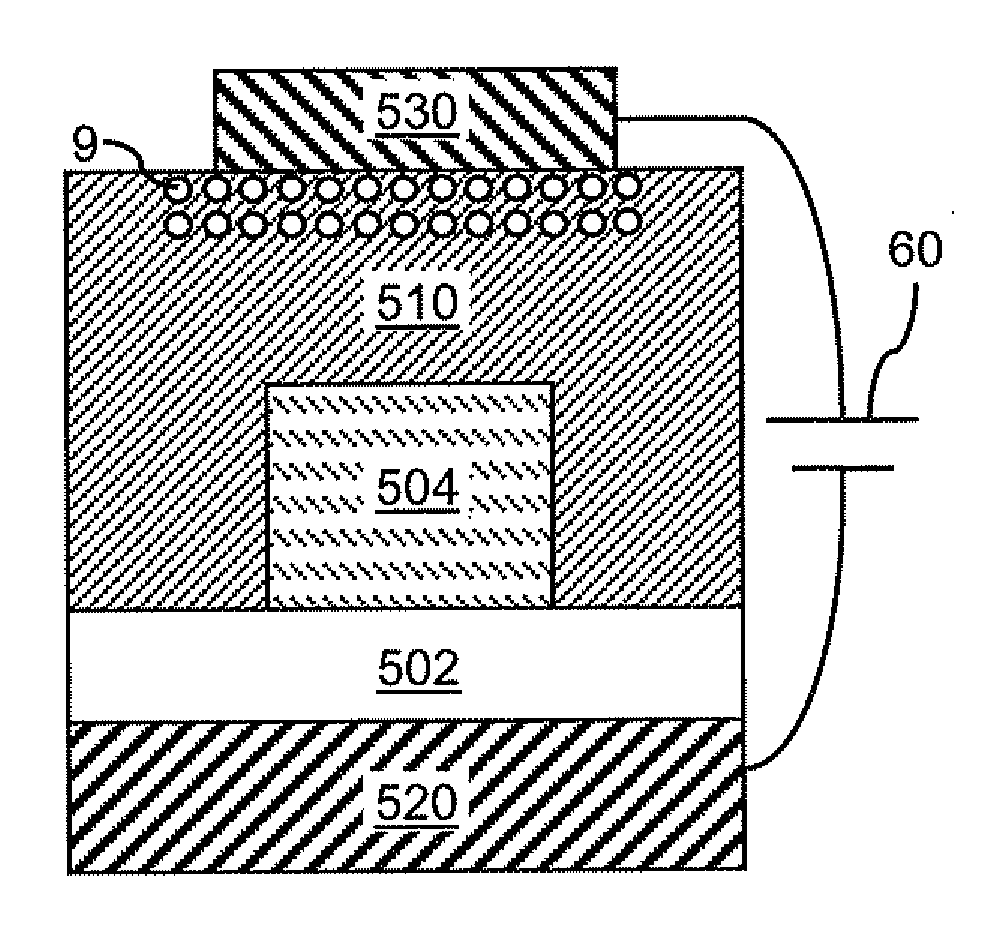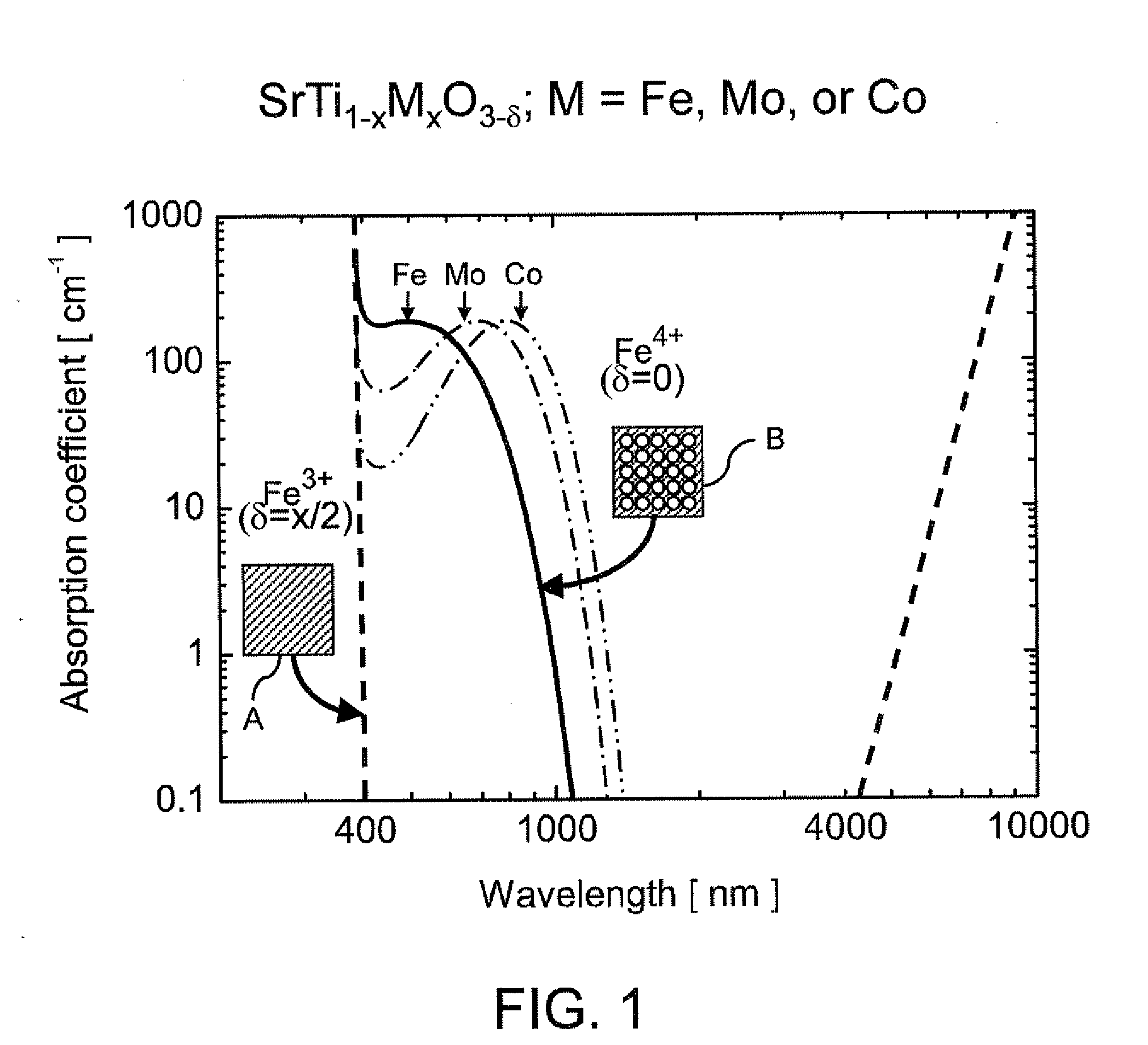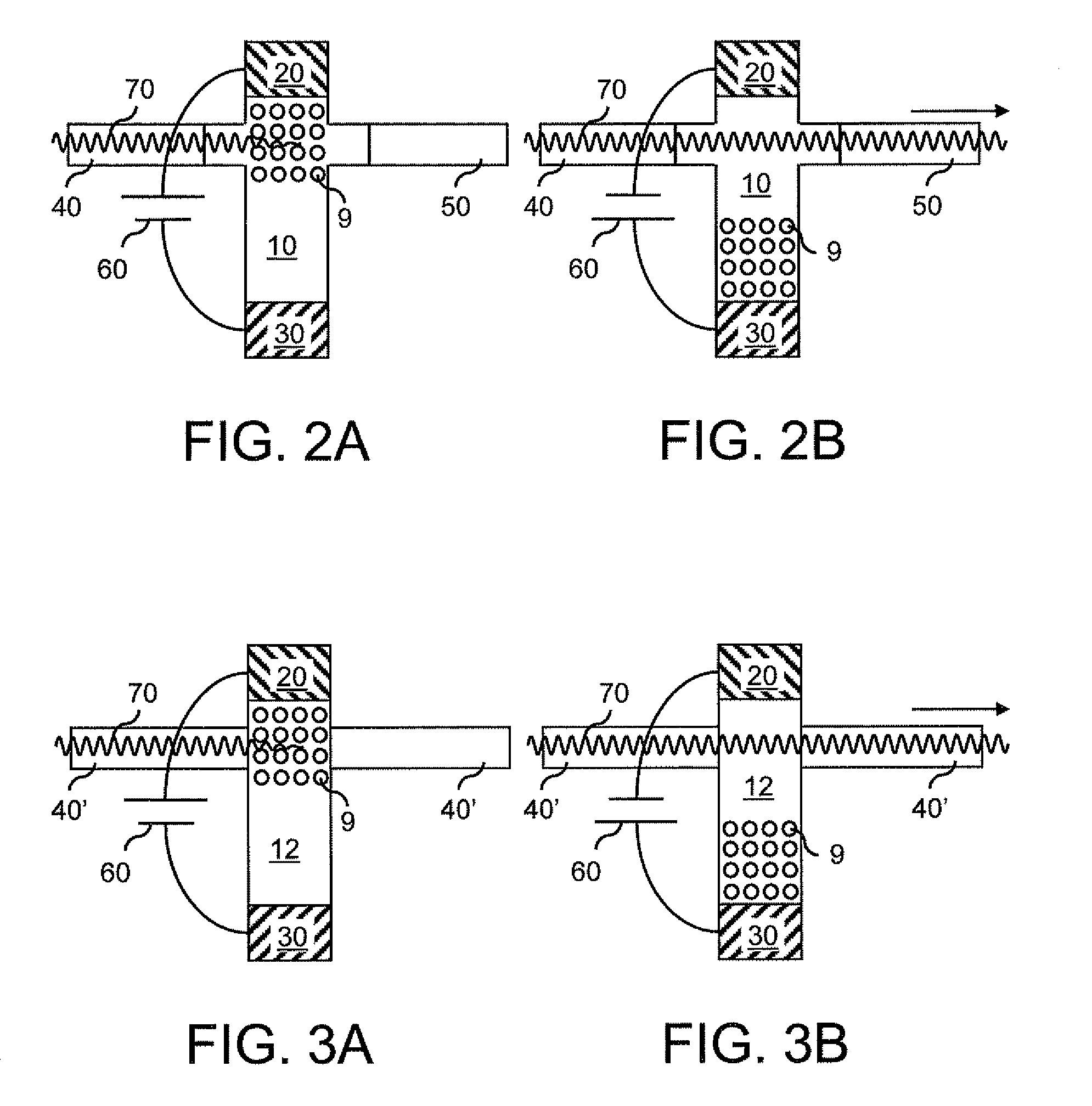Non-volatile programmable optical element employing f-centers
- Summary
- Abstract
- Description
- Claims
- Application Information
AI Technical Summary
Benefits of technology
Problems solved by technology
Method used
Image
Examples
second embodiment
[0075]Referring to FIGS. 3A and 3B, a second exemplary electro-optical structure is shown in see-through top-down views according to the present invention. The second exemplary electro-optical structure employs a doped transition metal oxide structure 12 that is distinct from an optical medium structure (not shown) that underlies a doped transition metal oxide structure 12. FIG. 3A shows the second exemplary electro-optical structure in a first switching state in which a doped substantially stoichiometric transition metal oxide region including F-centers 9 overlies a path of electromagnetic radiation 70. FIG. 3B shows the second exemplary electro-optical structure in a second switching state in which a doped oxygen-deficient transition metal oxide region substantially free of F-centers 9 overlies or underlies the path of the electromagnetic radiation 70.
[0076]While the second exemplary electro-optical structure employs an optical medium structure that underlies the doped transition ...
first embodiment
[0077]The second exemplary electro-optical structure comprises the doped transition metal oxide structure 12, the optical medium structure that underlies the doped transition metal oxide structure and aligned to a waveguiding structure 40′, a first electrode 20 and a second electrode. The optical medium structure may comprise a waveguide core, and the doped transition metal oxide structure 12 may comprise a waveguide cladding, i.e., a layer that abuts, surrounds, or encloses the surfaces of the waveguide core. The F-centers move between the first electrode 20 and the second electrode 30 in the same manner as in the Electromagnetic radiation 70 passes through the waveguiding structure 40′ and into the doped transition metal oxide structure 12 because the wavefunction of the electromagnetic radiation extends outside of the waveguiding structure 40′ into the doped transition metal oxide structure 12 with an exponential decay in magnitude with distance from the surface of the optical m...
sixth embodiment
[0090]FIGS. 7A and 7B are cross-sectional views of a sixth exemplary electro-optical device according to the present invention. FIG. 7A is a cross-sectional view of the sixth exemplary electro-optical device in a first switching state, and FIG. 7B is a cross-sectional view of the sixth exemplary electro-optical device in a second switching state. The sixth exemplary electro-optical device comprises an optical switch including a doped transition metal oxide structure 10, a first electrode 20, and a second electrode 30. The optical switch (10, 20, 30) may be substantially the same as the assembly of the doped transition metal oxide structure 10, the first electrode 20, and the second electrode 30 in the first exemplary electro-optical structure described above. The sixth exemplary electro-optical structure further comprises a light source 380 and a screen element 390. The sixth exemplary electro-optical device may be employed as a display element, in which electromagnetic radiation 70...
PUM
 Login to View More
Login to View More Abstract
Description
Claims
Application Information
 Login to View More
Login to View More - R&D
- Intellectual Property
- Life Sciences
- Materials
- Tech Scout
- Unparalleled Data Quality
- Higher Quality Content
- 60% Fewer Hallucinations
Browse by: Latest US Patents, China's latest patents, Technical Efficacy Thesaurus, Application Domain, Technology Topic, Popular Technical Reports.
© 2025 PatSnap. All rights reserved.Legal|Privacy policy|Modern Slavery Act Transparency Statement|Sitemap|About US| Contact US: help@patsnap.com



